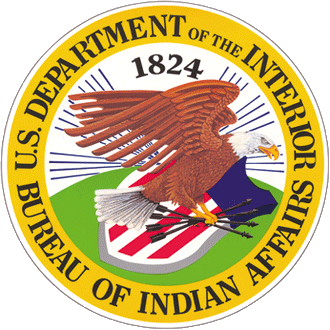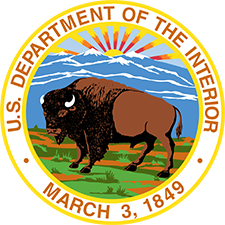WASHINGTON -- To address concerns regarding mineral leasing and development activity adjacent to Chaco Culture National Historical Park, Deputy Secretary of the Interior Michael L. Connor today announced the U.S. Department of the Interior will expand the resource management planning effort underway in the Farmington, New Mexico area.
For the first time, the Bureau of Land Management’s (BLM) Farmington Field Office and the Bureau of Indian Affairs’ (BIA) Navajo Regional Office will jointly conduct an expanded analysis of management in the area that covers both public and tribal lands.
“Today's announcement is an important step forward toward addressing the longstanding concerns surrounding oil and gas development around Chaco Canyon,” said Deputy Secretary Connor. “I heard these concerns firsthand when I visited Chaco last summer to participate in a public listening session with Senator Udall. BIA's decision to join BLM's planning effort as a co-lead reflects the complex land tenure around the park and demonstrates the Department's commitment to ensuring that the region's rich cultural and archaeological resources are protected.”
The BLM initiated a process to update its Resource Management Plan for the area – which guides development activities on public lands there – in 2014. In support of expanding the planning effort to include tribal lands in the area, the BLM and the BIA are seeking public comments to identify issues and concerns related to including BIA-managed mineral leasing and associated activities in the Environmental Impact Statement (EIS) which is being prepared as part of the Resource Management Plan Amendment (RMP) Amendment. This expanded effort will look at the whole planning area, and will include mineral leasing and development activity around Chaco Culture National Historic Park.
The joint effort also reflects the Department of the Interior’s emphasis on working with Native American leaders to provide expanded opportunities for integrating traditional knowledge and expertise in the management of public lands that have a special historical, cultural or geographic connection with indigenous communities.
In June of 2015, Deputy Secretary Connor and Senator Tom Udall toured the Chaco Canyon area to see the sensitive archeological site and view the area beyond the park where drilling is proposed. After the visit to Chaco, Connor and Udall held meetings with interested stakeholders.
A Notice of Intent to prepare the RMP Amendment and conduct an EIS will be published in the Federal Register on October 21, 2016, which will formally open a 60-day public scoping period ending on December 20, 2016. The information gathered during this new scoping process will be added to the information already gathered as part of the BLM’s prior scoping process for the EIS.
As part of the scoping process, the BLM and the BIA will be hosting public scoping meetings at the following locations, dates, and times:
| Location |
Date |
Time |
|
Shiprock Chapter House
Hwy 64, Mile Post 23,Building 5548
Shiprock, NM 87420(Tentative)
|
November 10 (Tentative) |
9:00am-1:00pm (Tentative)
|
|
Huerfano Chapter House
P.O. Box 968
Bloomfield, NM 87413
|
November 10 |
3:00pm-7:00pm
|
|
Counselor Chapter House
P.O. Box 209
Counselor, NM 87018
|
November 12 |
9:00am-1:00pm
|
|
Nageezi Chapter House
P.O. Box 100
Nageezi, NM 87037
|
November 12 |
3:00pm-7:00pm
|
|
Ojo Encino Chapter House
13 Miles Southwest of Hwy 197
Ojo Encino, Cuba, NM 87913
|
November 14 |
9:00am-1:00pm
|
|
Whitehorse Lake Chapter House
HCR-79, Box 1500
Cuba, NM 87013
|
November 15 |
9:00am-1:00pm
|
|
Navajo Technical University
Lowerpoint Road State Hwy 371
Crownpoint, NM 87313
|
November 17 |
3:00pm-7:00pm
|
|
Navajo Nation Museum
Highway 264 and Loop Road
Window Rock, AZ 86515
(Tentative)
|
December 2 |
10:00am-2:00pm
|
The BLM and BIA are asking that input be received within the 60-day scoping period, ending December 20, 2016, or 15 days after the last meeting, whichever is later.
Input may be submitted by mail to BLM Farmington Field Office, Attention: Mark Ames, Project Manager, 6251 North College Blvd., Suite A, Farmington, New Mexico 87402; by email to BLM_NM_FFO_Comments@blm.gov, or by fax to 505-564-7608.
For the BIA, please contact Harrilene Yazzie, BIA Regional National Environmental Policy Act Coordinator at 505-863-8287, P.O. Box 1060, Gallup, New Mexico 87301, or harrilene.yazzie@bia.gov.
Additional information is available online at FARMINGTON RMP: MANCOS-GALLUP AMENDMENT.



